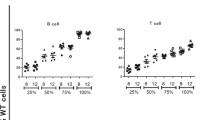Summary
Five patients with various clinical and genetic phenotypes of adrenoleukodystrophy were treated with a diet enriched with glycerol trioleate and glycerol trierucate (GTE). In all patients platelet counts decreased upon the administration of GTE, but no bleeding symptoms occurred in any of the patients, and bleeding time remained normal. Pseudothrombocytopenia was excluded in all patients. Thrombocytopenia was marked (84000–37000/mm) in three of the patients but was fully reversible after discontinuation of GTE. Mean platelet volumes were abnormally increased in all patients. When GTE was again administered by stepwise increasing the daily dose, platelet counts showed a clearly dose-dependent decrease. Bone marrow biopsies revealed no evidence of reduced megakaryocytopoiesis. The data indicate that in patients with adrenoleukodystrophy treated with GTE platelet counts should be closely monitored because thrombocytopenia may limit the maximal daily intake of GTE.
Similar content being viewed by others
Abbreviations
- ALD:
-
adrenoleukodystrophy
- AMN:
-
adrenomyeloneuropathy
- VLCFA:
-
very long chain fatty acids (C22C26)
- GTO:
-
glycerol trioleate (C18:1)
- GTE:
-
glycerol trierucate (C22:1)
References
Blomstrand R, Diczfalusy U, Sisfontes L, Svensson L (1985) Influence of dietary partially hydrogenated vegetable and marine oils on membrane composition and function of liver microsomes and platelets in the rat. Lipids 20:283–295
Born GVR (1962) Quantitative investigation of blood platelets. J Physiol (Lond) 67–68
Brown III FR, van Duyn MAS, Moser AB, Schulman JD, Rizzo WB, Synder D, Murphy JV, Kamoshita S, Migeon CJ, Moser HW (1982) Adrenoleukodystrophy: effects of dietary restriction of very long chain fatty acids and of administration of carnitine and clofibrate on clinical status and plasma fatty acids. John Hopkins Med J 151:164–172
Knazek RA, Rizzo WB, Schulman JD, Dave JR (1983) Membrane microviscosity is increased in the erythrocytes of patients with adrenoleukodystrophy and adrenomyeloneuropathy. J Clin Invest 72:245–248
Lagarde M, Croset M, Boukhchache D, Greffe A, Dechavanne M, Renaud S (1984) Lipoxygenase activity of intact human platelets. Prostaglandins Leukot Med (Scotland) 13:61–66
Lazo O, Contreras M, Hashimi M, Stanley W, Irazu C, Singh I (1988) Peroxisomal lignoceroyl-CoA ligase deficiency in childhood adrenoleukodystrophy and adrenomyeloneuropathy. Proc Nail Acad Sci USA 85:7647–7651
Lenard HG (1984) Adrenoleukodystrophy. Neuropediatrics 15 [Suppl]:16–19
Moser HW, Pallante SL, Moser AB, Rizzo WB, Schulman JD, Fenselan C (1983) Adrenoleukodystrophy: origin of very long chain fatty acids and therapy. Pediatr Res 19:293 (A)
Moser HW, Moser AE, Singh I, O'Neill BP (1984) Adrenoleukodystrophy: survey of 303 cases: biochemistry, diagnosis, and therapy. Ann Neurol 16:628–641
Moser AB, Borel J, Odone A, Naidu S, Cornblath D, Sanders DB, Moser HW (1987) A New dietary therapy for adrenoleukodystrophy: biochemical and preliminary clinical results in 36 patients. Ann Neurol 21:240–249
Mosser J, Douar AM, Sarde CO, Kioschis P, Feil R, Moser H, Poustaka AM, Mandel JL, Aubourg P (1993) Putative X-linked adrenoleukodystrophy gene shares unexpected homology with ABC transporters. Nature 361:726–730
Rizzo WB, Phillips MW, Dammann AL, Leshner RT, Jennings SS, Avigan J, Proud VK (1987) Adrenoleukodystrophy: dietary oleic acid lowers hexacosanoate levels. Ann Neurol 21:232–239
Rizzo WB, Leshner RT, Odone A, Dammann AL, Craft DA, Jensen ME, Jennings SS, Davis S, Jaitly R, Sgro JA (1989) Dietary erucic acid therapy for X-linked adrenoleukodystrophy. Neurology 39:1415–1422
Suzuki S, Kobayashi T, Goto I, Kuroiwa Y (1986) Dietary treatment of adrenoleukodystrophy. Neurology 36:104–106
Theda C, Moser AB, Powers JM, Moser HW (1992) Phospholipids in X-linked adrenoleukodystrophy white matter: fatty acid abnormalities before the onset of demyelination. J Neurol Sci 110:195–204
Uziel G, Bertini E, Bardelli P, Rimoldi M, Gambetti M (1991) Experience on therapy of adrenoleukodystrophy and adrenomyeloneuropathy. Dev Neurosci 13:274–279
Van Duyn MA, Moser AE, Brown III, FR, Sachtor N, Liu A, Moser HW (1984) The design of a diet restricted in saturated very long-chain fatty acids: therapeutic application in adrenoleukodystrophy. Am J Clin Nutr 40:277–284
Wilson R, Tocher DR, Sargent JR (1992) Effects of exogeneous monounsaturated fatty acids on fatty acid metabolism in cultured skin fibroblasts from adrenoleukodystrophy patients. J Neurol Sci 109:207–214
Zierz S, Tackmann W (1989) Adrenoleukodystrophie und Adrenomyeloneuropathie: klinisches Spektrum, Pathobiochemie, Diagnose und Therapie. Fortschr Neurol Psychiatr 57:527–534
Author information
Authors and Affiliations
Rights and permissions
About this article
Cite this article
Zierz, S., Schröder, R. & Unkrig, C.J. Thrombocytopenia induced by erucic acid therapy in patients with X-linked adrenoleukodystrophy. Clin Investig 71, 802–805 (1993). https://doi.org/10.1007/BF00190322
Received:
Revised:
Accepted:
Issue Date:
DOI: https://doi.org/10.1007/BF00190322




